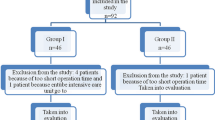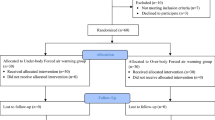Abstract
This study assessed the relative efficiency of different warming devices (surgical sheets covering the body and a tubegauze on the head, forced-air warming, warming mattress) commonly used to prevent body hypothermia during neonatal surgery. Dry heat losses were measured from a thermal manikin, which simulated a low-birth-weight neonate of 1,800 g. The manikin’s surface temperatures (35.8°C) corresponded to those of neonates nursed in closed incubators. Experiments were performed in a climatic chamber at an ambient temperature of 30°C, as commonly found in operating theatres. The supine manikin was naked or covered with operative sheets with a 5×5 cm aperture over the abdomen. Its head could be covered by a tubegauze. Additional warming was provided by conduction through a warming mattress (surface temperature, 39°C) and/or by convection (Bair Hugger, forced-air temperature 38°C). Covering the manikin with surgical sheets decreased the dry heat loss by 10.4 W. Additional forced-air warming was more efficient than the warming mattress to reduce the total dry heat loss (6.8 W vs 2.1 W). Heat losses were reduced by 7.9 W when combining the warming mattress and Bair Hugger. The heat loss from the head of the covered manikin was reduced from 4.5 W to 3.9 W when the head was covered with the tubegauze. Our data indicate that forced-air warming is more effective than conductive warming in preventing neonatal hypothermia during abdominal operations.


Similar content being viewed by others
References
Asaga T, Komatsu H, Chujo K, Ueki M, Yokono S, Ogli K (1997) Efficacy of ring-shape cover in active skin surface in neonates: a retrospective comparative study with conventional methods. Masui 46:1362–1367
Brauer A, English MJ, Steinmets, Lorenz N, Perl T, Braun U, Weyland W (2002) Comparison of forced-air warming systems with upper body blankets using a copper manikin of the human body. Acta Anaesthesiol Scand 46:965–972
Elabbassi EB, Bach V, Makki M, Delanaud S, Telliez F, Léké A, Libert JP (2001) Measurement of dry heat exchanges in the newborn from a thermal mannequin: influence of body position and clothing in the sudden infant death syndrome. J Appl Physiol 91:51–56
Elabbassi EB, Chardon K, Telliez F, Bach V, Libert JP (2002) Influence of head position on thermal stress in newborns: simulation using a thermal mannequin. J Appl Physiol 93:1275–1279
Hynson JM, Sessler DI (1992) Intraoperative warming therapies: a comparison of three devices. J Clin Anesth 4:194–199
Komatsu H, Chujo K, Ogli K (1996) Forced-air warning system for perioperative use in neonates. Paediatr Anaesth 6:427–428
Kurz A, Kurz M, Poeschlo G, Faryniak B, Redl G, Hackl W (1993) Forced-air warning maintains intraoperative normothermia better than circulating-water mattresses. Anesth Analg 77:89–95
Lennon RL, Hosking MP, Conover MA, Perkins WJ (1990) Evaluation of a forced-air system for warming hypothermic postoperative patients. Anesth Analg 70:424–427
Lewis RB, Shaw A, Etchelles H (1973) Contact mattress to prevent heat loss in neonatal and paediatric surgery. Br J Anaesth 45:919–922
Russell SH, Freeman JW (1995) Prevention of hypothermia during orthotopic liver transplantation: comparison of three different intraoperative warning methods. Br J Anaesth 74:415–418
Sarman I (1992) Thermal responses and heart rates of low-birth-weight premature babies during daily care on a heated water-filled mattress. Acta Paediatr 81:15–20
Sarman I, Bolin D, Holmer I, Tunell R (1992) Assessment of thermal conditions in neonatal care: use of a manikin of premature body size. Am J Perinatol 9:239–246
Schlunzen L, Lundbol Vestergaard A, Moller-Nielsen I, Pedersen J, Hjortholm K, Sloth E (1998) Convective warming blankets improve peroperative heat preservation in congenital heart surgery. Paediatr Anaesth 8:397–401
Tollofsrud SG, Gundersen Y, Andersen R (1984) Peroperative hypothermia. Acta Anaesthesiol Scand 28:511–515
Acknowledgements
The authors thank the Regional Council of Picardy and the French Ministry of Research who supported this study.
Author information
Authors and Affiliations
Corresponding author
Rights and permissions
About this article
Cite this article
Buisson, P., Bach, V., Elabbassi, E.B. et al. Assessment of the efficiency of warming devices during neonatal surgery. Eur J Appl Physiol 92, 694–697 (2004). https://doi.org/10.1007/s00421-004-1126-1
Accepted:
Published:
Issue Date:
DOI: https://doi.org/10.1007/s00421-004-1126-1




